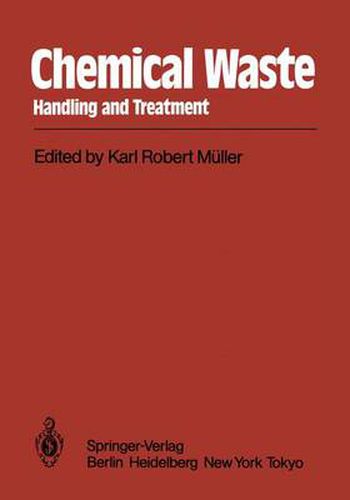Readings Newsletter
Become a Readings Member to make your shopping experience even easier.
Sign in or sign up for free!
You’re not far away from qualifying for FREE standard shipping within Australia
You’ve qualified for FREE standard shipping within Australia
The cart is loading…






This title is printed to order. This book may have been self-published. If so, we cannot guarantee the quality of the content. In the main most books will have gone through the editing process however some may not. We therefore suggest that you be aware of this before ordering this book. If in doubt check either the author or publisher’s details as we are unable to accept any returns unless they are faulty. Please contact us if you have any questions.
During the past few years the worlds has reverberated of names like Seveso, Love Canal, Lekkerkerk, Times Beach, just to name the most publicized ones. All these names are connected with hazardous or toxic waste, waste from business and industry, especially the chemical industry. The list is endless because there are, all over the world, many thousands of points noirs : not yet discovered or identified old lagoons and landfills, polluted rivers, estuaries, and harbors needing remedial action, which undoubtedly will reveal more unpleasant secrets of the chemical industry’s past. It is not an exaggerated statement that chemists of the past have paid too much attention to the composition of new products while neglecting the disposition of byproducts, i.e., chemical waste. Admittedly, during the last decade this attitude has changed dramatically. Although we cannot yet properly speak of a new science of peri ontology (the theory of residues), we seem to be headed towards substantiated rules, analyses, disposal protocols, definitions and remedial practices in handling the problems of chemical waste. Especially during the last two years comprehensive treatises of the whole complex subject as well as monographs dealing with assorted aspects of waste tech nology have appeared.
$9.00 standard shipping within Australia
FREE standard shipping within Australia for orders over $100.00
Express & International shipping calculated at checkout
This title is printed to order. This book may have been self-published. If so, we cannot guarantee the quality of the content. In the main most books will have gone through the editing process however some may not. We therefore suggest that you be aware of this before ordering this book. If in doubt check either the author or publisher’s details as we are unable to accept any returns unless they are faulty. Please contact us if you have any questions.
During the past few years the worlds has reverberated of names like Seveso, Love Canal, Lekkerkerk, Times Beach, just to name the most publicized ones. All these names are connected with hazardous or toxic waste, waste from business and industry, especially the chemical industry. The list is endless because there are, all over the world, many thousands of points noirs : not yet discovered or identified old lagoons and landfills, polluted rivers, estuaries, and harbors needing remedial action, which undoubtedly will reveal more unpleasant secrets of the chemical industry’s past. It is not an exaggerated statement that chemists of the past have paid too much attention to the composition of new products while neglecting the disposition of byproducts, i.e., chemical waste. Admittedly, during the last decade this attitude has changed dramatically. Although we cannot yet properly speak of a new science of peri ontology (the theory of residues), we seem to be headed towards substantiated rules, analyses, disposal protocols, definitions and remedial practices in handling the problems of chemical waste. Especially during the last two years comprehensive treatises of the whole complex subject as well as monographs dealing with assorted aspects of waste tech nology have appeared.